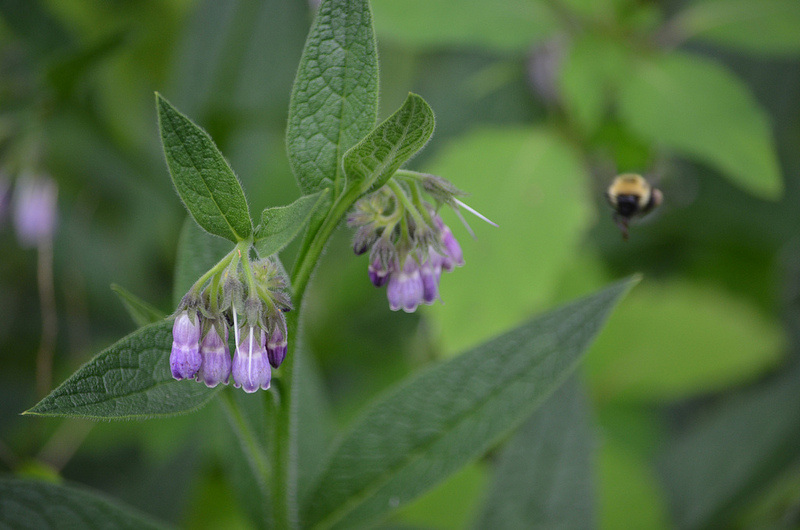|
Comfrey is probably one of the most talked about plants in permaculture plant forums, and it’s no wonder! This prolific plant is stout, easy to propagate and very useful. This little dandy is sometimes called knit-bone, because it is commonly used as a poultice to help heal broken bones. How cool is that!
In fact, since so much has been said, I won’t say too much my self, but I would like to point you to a couple of awesome resources on the matter! First, there’s Paul Wheaton’s video, “Why Permaculture Folks Love Comfrey.” It’s a 10 minute video, where some permaculture experts talk about the awesomeness of this beneficial plant! Toby Hemenway, author of “Gaia’s Garden,” even calls comfrey the King of Permaculture! If you are even a little bit curious, about comfrey, I would check it out. Secondly, I’m going to point you to the Plants For A Future Database (PFAF). They are a non-profit, research organization dedicated to researching and providing information on ecologically sustainable horticulture. They have been compiling a database for more than a decade. That database currently has more than 7,000 different species of plants. THEY ARE AWESOME!!!! PFAF lists 5 different species of Comfrey, edible, medicinal, and other uses for the plant, growing conditions, propagation techniques and more. Here are some highlights from the PFAF entry on Symphytum officinale, or common comfrey:
For more on this highly beneficial plant, including toxicity information, check out the database at www.pfaf.org. We’ll see you soon with another awesome Plant Profile from Haven Homestead!
11 Comments
|
Lindsay Hodge
Lindsay Hodge is our resident Writer here at Haven Homestead. She keeps this blog, a GRIT blog, and writes other fun things too. Categories
All
Archives
May 2018
|



 RSS Feed
RSS Feed
